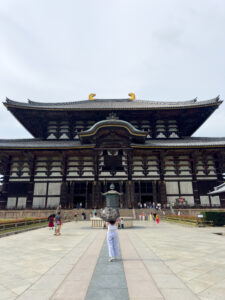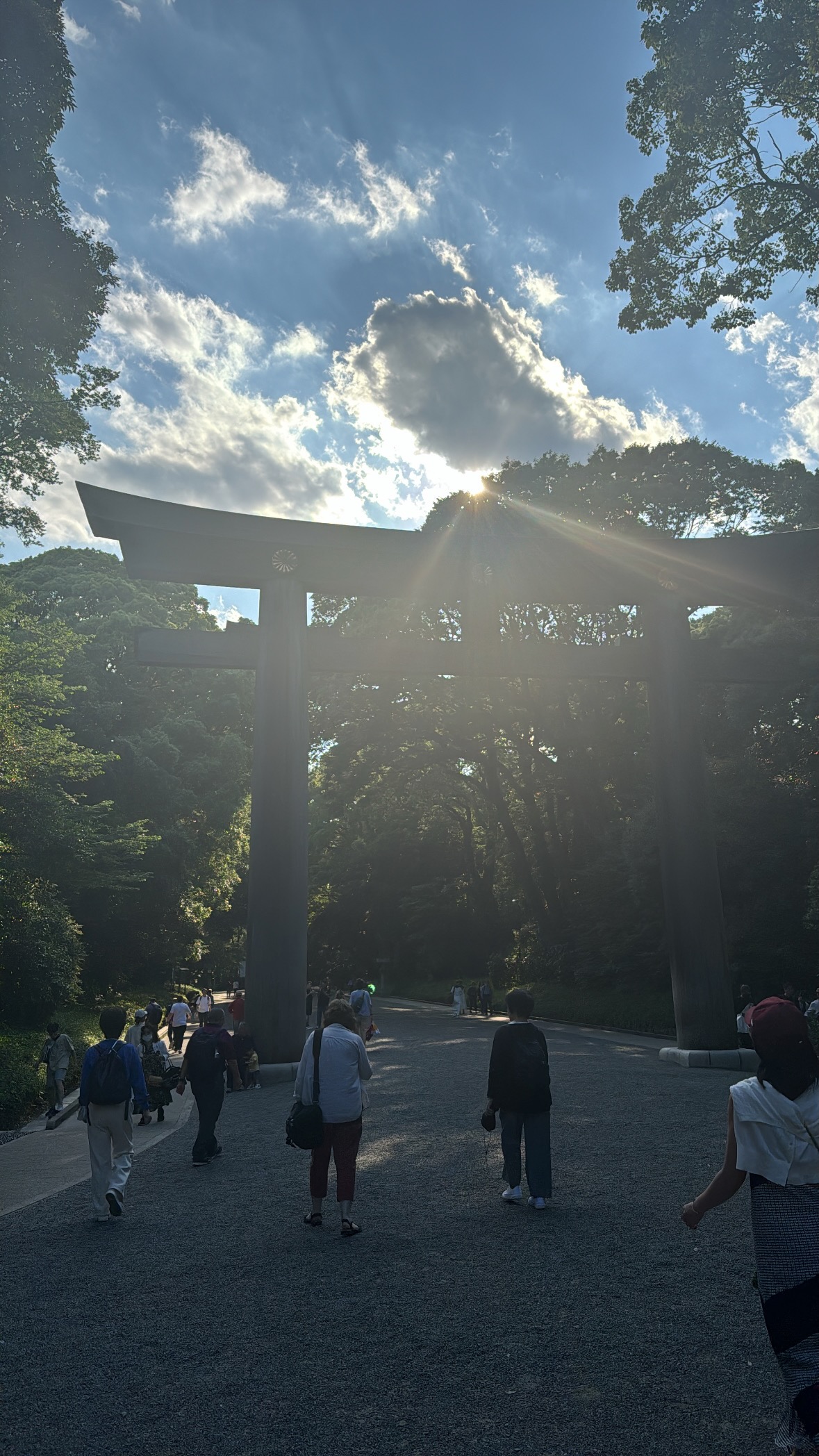
As we nodded into a long-awaited deep sleep from the eventful travel day the night before, we awoke to take on our first full day in Tokyo, Japan. Many students started the day bright and early for the complimentary breakfast, while others needed the extra time to sleep in, myself included.
Rested and fed, we quickly huddled to discuss the day ahead.
As we navigated through the bustling and chaotic train system during morning rush hour, we arrived at the Tsukiji Outer Market. Located in central Tokyo, the outdoor market is a treasure trove of culinary delights, featuring fresh seafood and an array of traditional Japanese foods.
But it’s not just about food; the market also offers a variety of goods, including clothing, kitchen utensils, tableware and more. As soon as we arrived, an incredibly pleasant aroma filled the air. International relations senior Elian Reyes and I looked at each other and simultaneously blurted out, “That smells so good!”
Although a few students concentrated on sightseeing, the majority of us indulged in the market’s vast array of delectables.
As the summer rays beat down on us, some chose to cool off with frozen tanghulu, a Chinese candied fruit, and uniquely flavored ice cream. With an empty stomach, I had my eyes set on one thing: a savory snack. With my craving in full effect, I actually walked past a shop, but a meat display piqued my interest, forcing me to turn back.
That shop’s specialty, Kobe beef, a type of beef that is tender, fatty and well marbled, was just the thing I was looking for to satisfy my insatiable craving. The enticing scent of freshly grilled beef surrounded me. This beef is considered a delicacy and comes at a steep price. This, however, did not deter me.
The experience was incredibly thrilling: first, I selected the specific cut of meat I wanted, then I chose how I wanted it cooked and finally, I had the opportunity to watch them prepare it right in front of me. Four bite-size pieces of Kobe beef on a skewer, which were 2,000 yen (about $12 U.S. dollars), melted in my mouth. Before I knew, it was all gone and worth every yen.
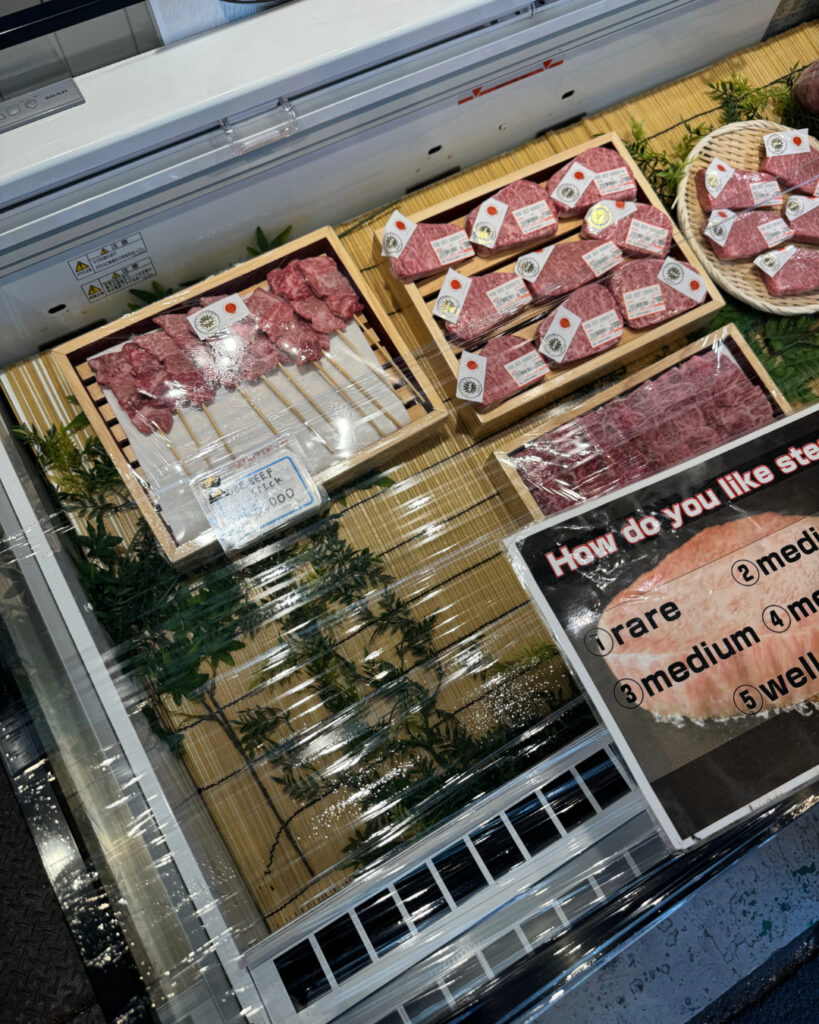
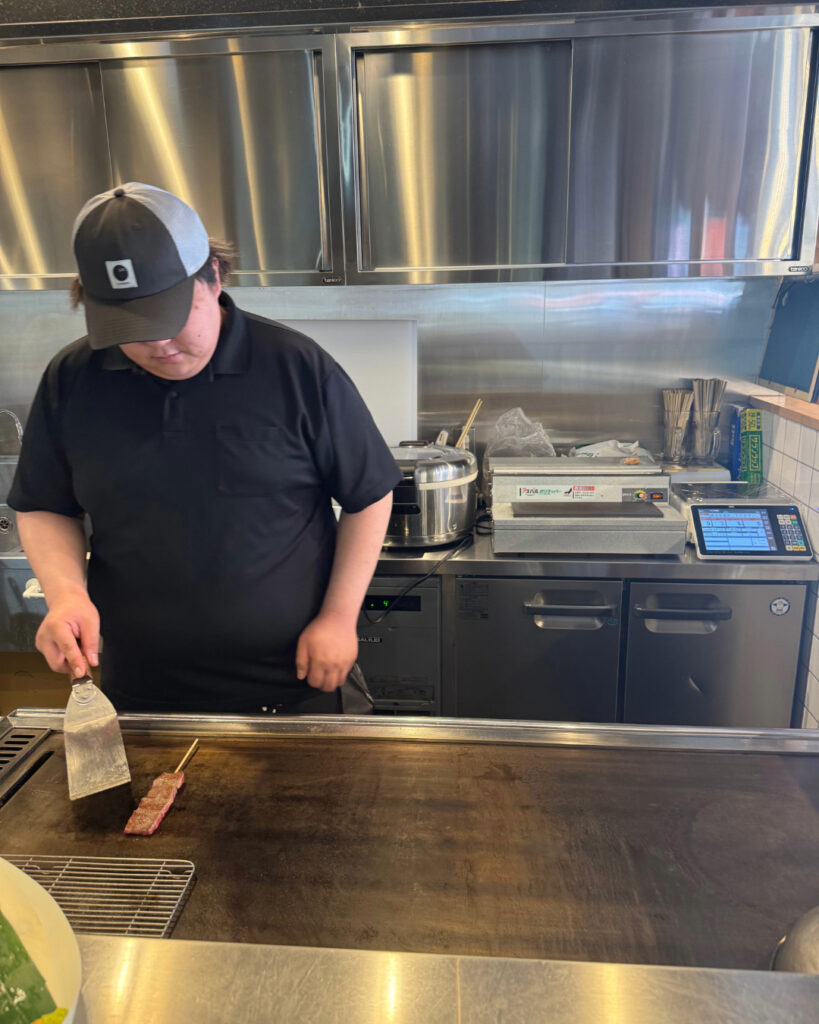
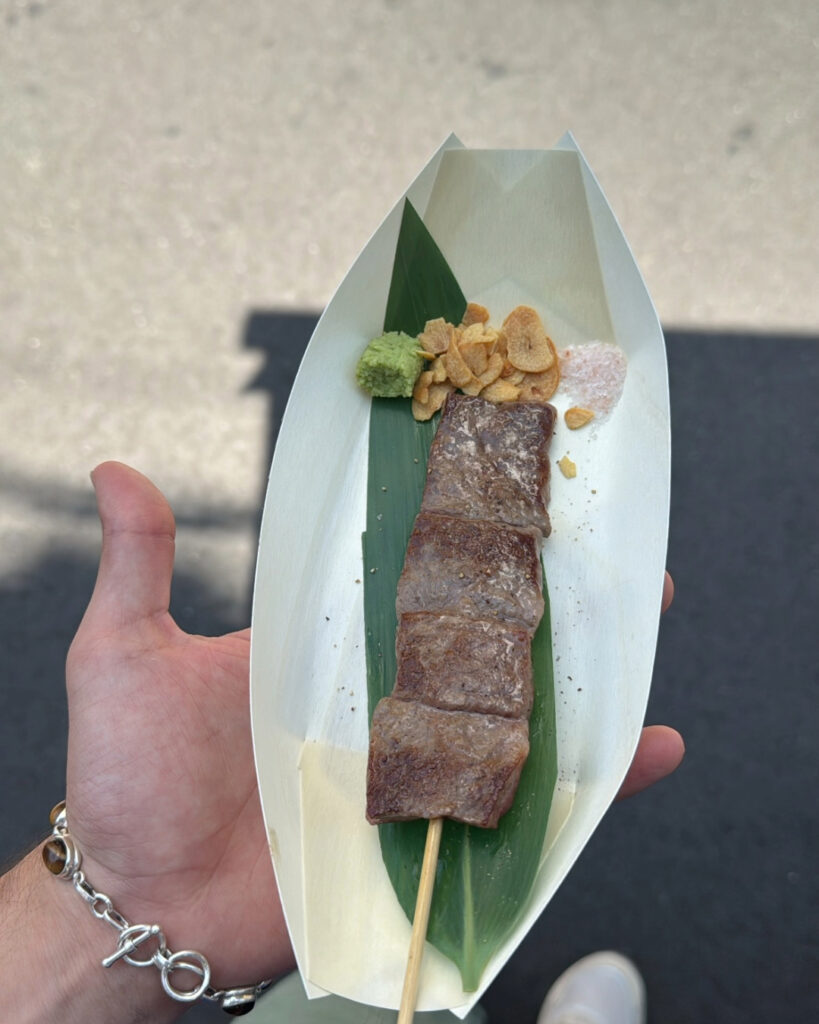
The market was heavy with the sounds of locals and visitors alike. After the busy market visit, we had a more therapeutic experience.
Shinjuku Gyoen National Garden is one of Tokyo’s largest and most popular parks. The park’s expansive lawns, winding walking paths, greenhouse and serene scenery offer a peaceful retreat from the city’s bustling urban center. During spring, the garden is one of the best spots in the city for cherry blossom viewing. As we explored the gardens, we found locals and visitors enjoying the garden to take a quick break, a stroll or even an afternoon nap.
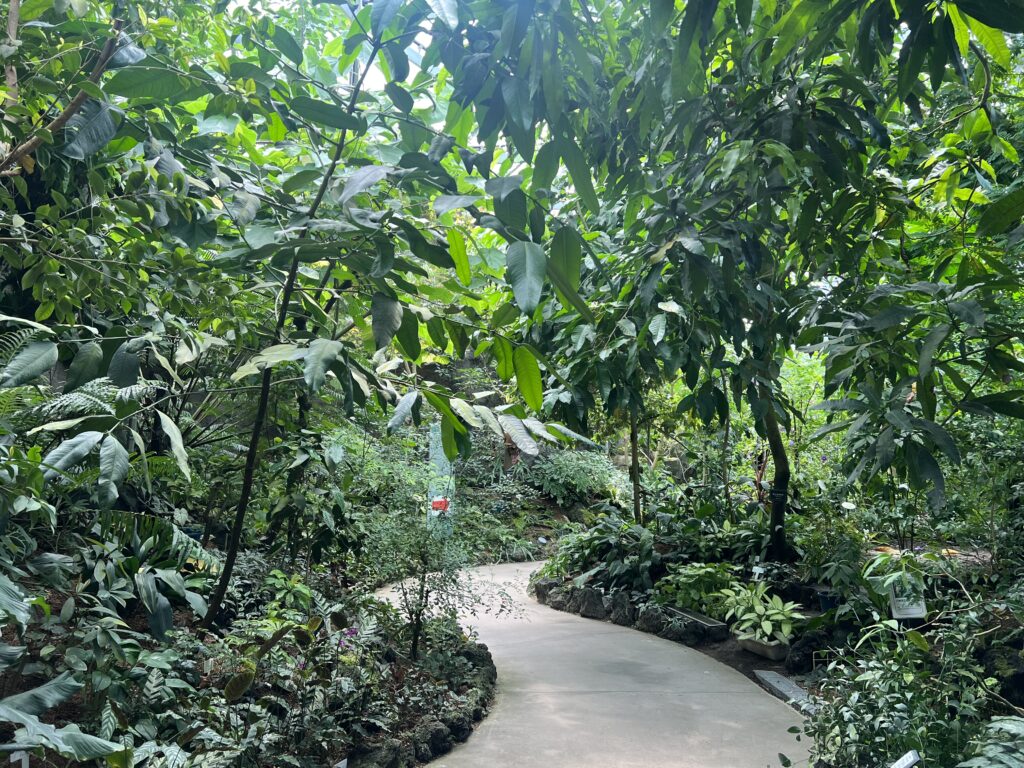
“I laid down in the shade under a tree and the grass was the softest I’ve ever touched,” sophomore Kaitlyn Maurer said. “It was also so cool that I felt refreshed once I got up.” Like Kaitlyn, many patrons chose to enjoy the lush grounds. Some had picnics, some lounged around reading and others simply soaked up the sun.
The lively morning did not stop there. Our large group took a break for lunch to further explore the city’s Harajuku Fashion District, a popular shopping neighborhood in Tokyo known for its influence on Japanese pop culture.
With our hunger and shopping needs satisfied, we headed toward our next destination: the Meiji Jingu Shrine.
Tokyo tour guide Yutaka Otsuki, who accompanied us on Wednesday, shared with us the origin of Meiji Jingu Shrine, which was completed in 1920 and was dedicated to the Emperor Meiji and the Empress Shoken. The shrine’s grounds consist of 100,000 donated trees from all over the country. The display of sake barrels on one side and wine barrels on the other represent Meiji’s influence in modernizing Japan and opening the country to the rest of the world.
Otsuki instructed us to give a slight bow before passing on the left or the right side of the gate. The center of the gate, he said, is reserved for the gods by tradition.
The torii gate’s impressive structure left some students fascinated.
“The large torii gates were beautifully crafted and really made sure to catch your attention no matter how near or far you were,” sophomore electronic media major Cade Gulley said. “Walking through them was really a wondrous feeling.”
After a successful, albeit incredibly busy, day, Asia Institute hosted a welcome dinner for the SJMC Japan program in Asakusa to celebrate the first full day. As dishes poured out, conversation and laughter filled the room, strengthening the bond of those in the program and leaving a sense of excitement for adventures to come.
As we winded down, we couldn’t help but think about tomorrow’s activities: visiting Kamakura, an ancient former capital of Japan, and a giant Buddha on Thursday.





